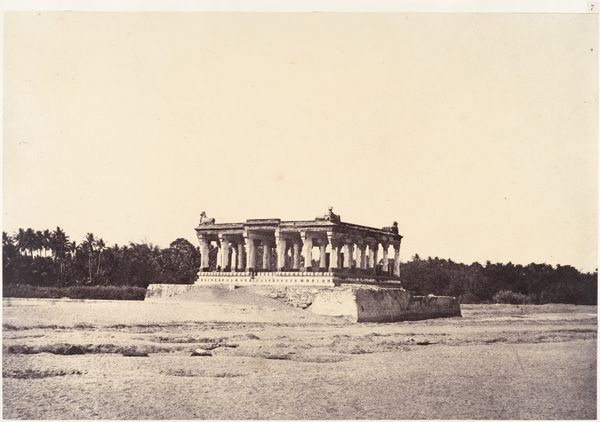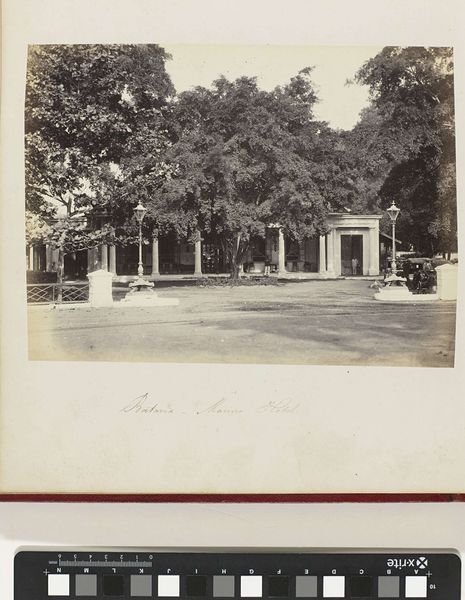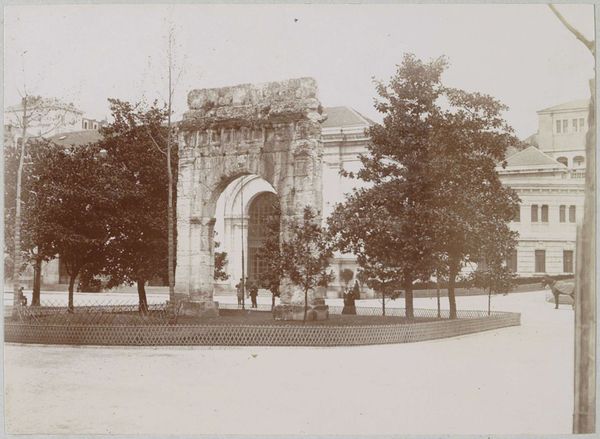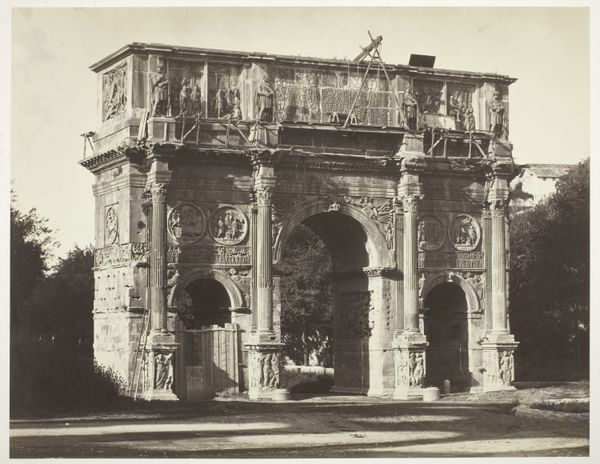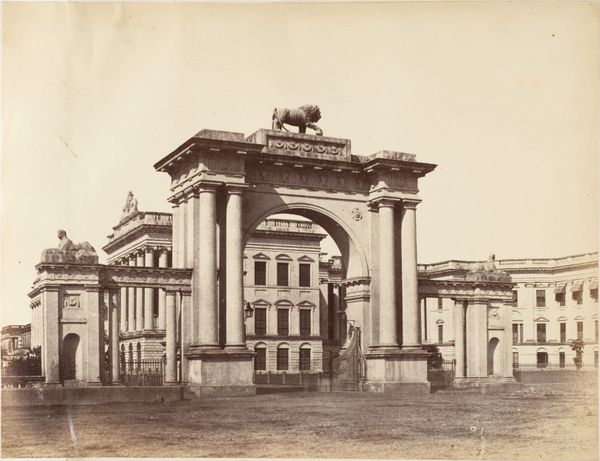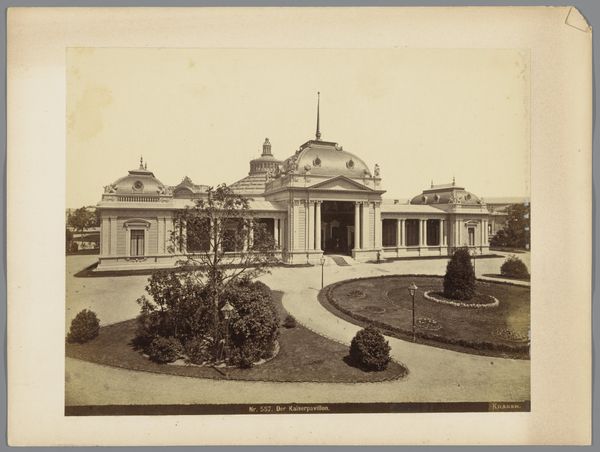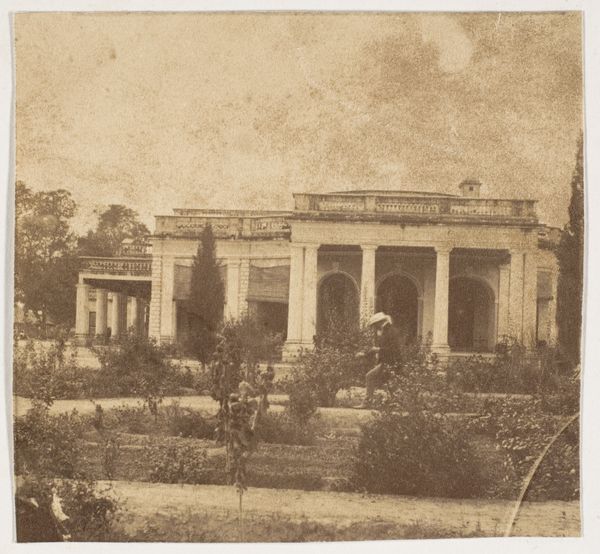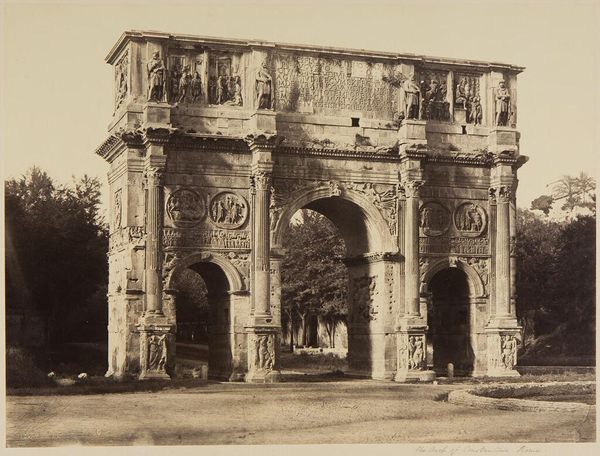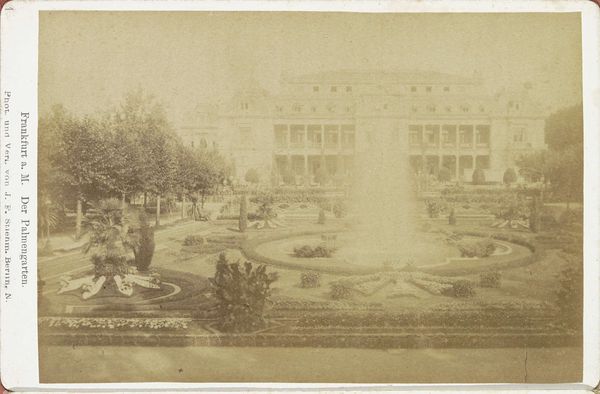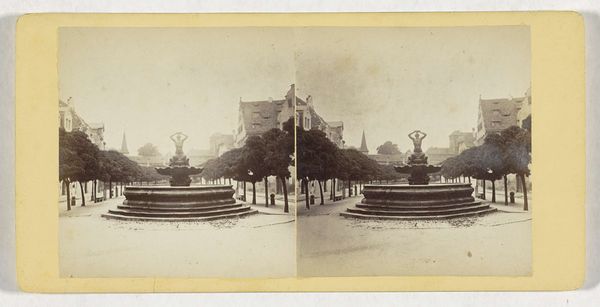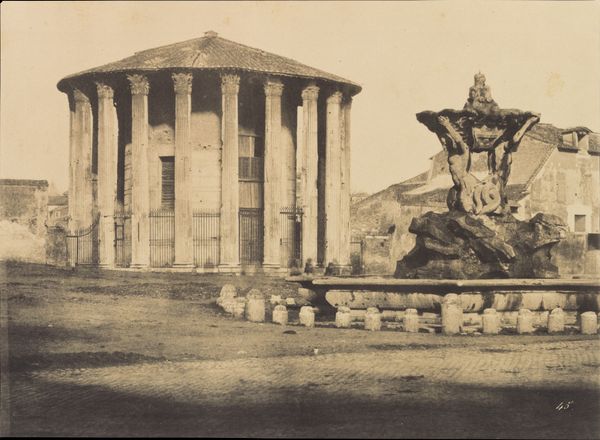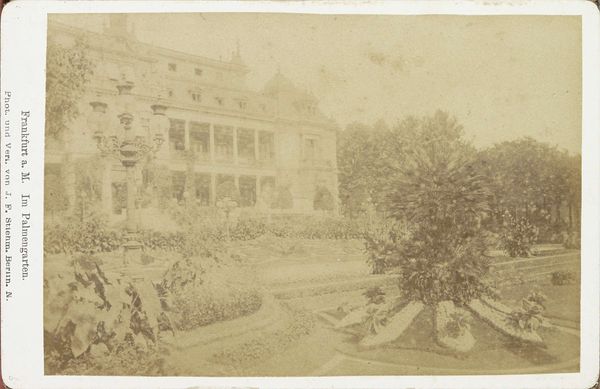
Dimensions: height 168 mm, width 208 mm, height 282 mm, width 334 mm
Copyright: Rijks Museum: Open Domain
Curator: This photograph, titled "Monument voor keizer Wilhelm I in Berlijn", captures the statue and surrounding architecture around 1898. The photograph is credited to Friedrich Albert Schwartz. Editor: The photograph has such a grandiose, imposing presence. The monument's dark bronze material stands in stark contrast to the bright, open cityscape. It immediately gives off a feeling of imperial power and ambition. Curator: Note how the photographer captured the statue in the context of the surrounding architecture. The neoclassical style of the buildings further emphasizes the monument's intention, which serves as an attempt to visually root the emperor within an idealized historical lineage and, of course, legacy. Editor: Exactly. Looking closer, one has to consider the physical creation of something like this at the time—the process of casting bronze on such a monumental scale would have involved incredible labor. There were extensive industrial processes in place to create this one single monument. Curator: True, but the image presents more than mere labour. Look at the formal arrangement—the rider figure atop the horse elevated above all others, gazing authoritatively. The careful distribution of weight creates a balanced composition. Editor: Balance, perhaps, but I'd also point out that the photograph conceals the labor and economic cost behind the sculpture itself. Those masses and details hide the real people who toiled to make the monument manifest. Whose narratives are being concealed or flattened? Curator: But the artist, Schwartz, also understood his medium; print photography as its own emerging art. Capturing the details of the sculptural surface, for instance. How it conveys texture. The way the light dances off the metal. It evokes this very grand figure of the Emperor. Editor: A dance only made possible, don't forget, by human energy. As a piece it feels…uneasy. An icon meant to command, yes, but born out of complex social dynamics of the period and visible only through industrial capabilities and all the labour attached to it. Curator: A fascinating case study of historical construction and visual representation when you view its formal elements closely in relation to historical factors. Editor: Indeed, it challenges us to look at what we can immediately see, as well as considering how those powerful, impactful pieces come into being.
Comments
No comments
Be the first to comment and join the conversation on the ultimate creative platform.
